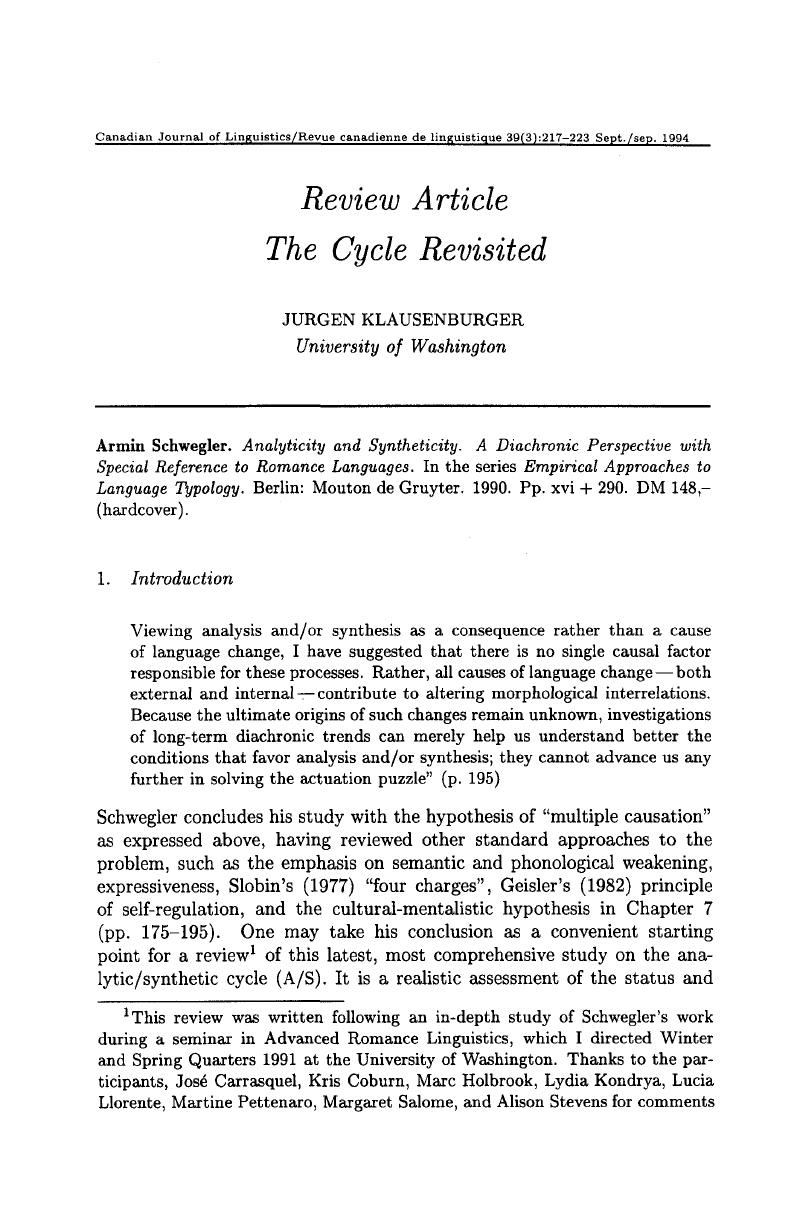No CrossRef data available.
Article contents
The Cycle Revisited
Published online by Cambridge University Press: 27 June 2016
Abstract
An abstract is not available for this content so a preview has been provided. Please use the Get access link above for information on how to access this content.

- Type
- Review Article
- Information
- Canadian Journal of Linguistics/Revue canadienne de linguistique , Volume 39 , Issue 3 , September 1994 , pp. 217 - 223
- Copyright
- Copyright © Canadian Linguistic Association 1994
References
Bybee, Joan
1985. Morphology. A Study of the Relation Between Meaning and Form. Amsterdam: John Benjamins.Google Scholar
Geisler, Hans
1982. Studien zur typologischen Entwicklung. Lateinisch-Altfranzosisch-Neufranzösisch. Munich: Fink.Google Scholar
Greenberg, Joseph
1954. A Quantitative Approach to the Morphological Typology of Language. International Journal of American Linguistics. 26:178–194.Google Scholar
Klausenburger, Jurgen
1991. On the Evolution of Latin Verbal Inflection into Romance: Change in Parameter Setting? Paper read at the 21st Linguistics Symposium on Romance Languages, University of California/Santa Barbara.Google Scholar
Slobin, Dan I.
1977. Language Change in Childhood and in History. Pp. 185–214 in Language Learning and Thought. Macnamara, John, ed. New York: Academic Press.Google Scholar
Wurzel, Wolfgang
1984. Flexionsmorphologie und Natürlichkeit. Berlin: Akademie Verlag.Google Scholar


